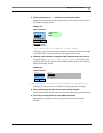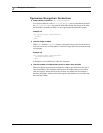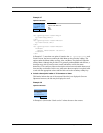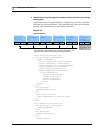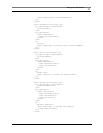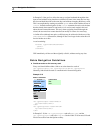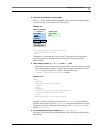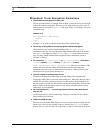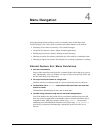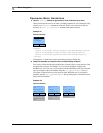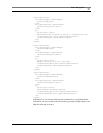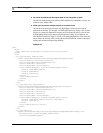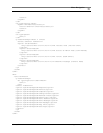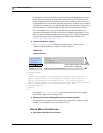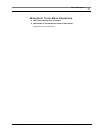
February 2001 Genie Application Style Guide 25
4
Chapter 4 Menu Navigation
Navigating though menus primarily consists of selecting items or links that, when
selected, display a new card or deck or perform some action. Menus can be used for:
• Presenting a list of data (for instance, a list of email messages)
• Navigation (for instance, choices within a financial application)
• Performing an action (for instance, deleting an email message)
• Selecting an option (for instance, picking the day of the week for a scheduled event)
• Changing an option (for instance, allowing the user to change a preference or setting)
Shared Feature Set: Menu Guidelines
■ Sort items contextually.
Items or links should be sorted logically as content dictates; this might be by type, by
date, alphabetically, and so on. If there is no logical order, sort by priority, that is, put
the item most likely to be chosen first.
■ Do not put more than 9 items on a single card.
Limit the amount of scrolling needed on a given card and allow for key shortcuts.
■ Create a More link or <select> element as the 9th item if there are more than
9 items in a menu.
Clicking More should display the next card of menu items.
■ Consider using numbers to help the user remember the application.
Even if the handset does not provide for key accelerators numbers help a user find
their way around an application and remember where to find the information that is
important to them. Openwave browsers (when using
<select> - and automatic
numbering) and some Mitsubishi Trium browsers (when using
<a> or <anchor>)
provide key accelerators, but numbering is potentially useful even if this is not
the case.



